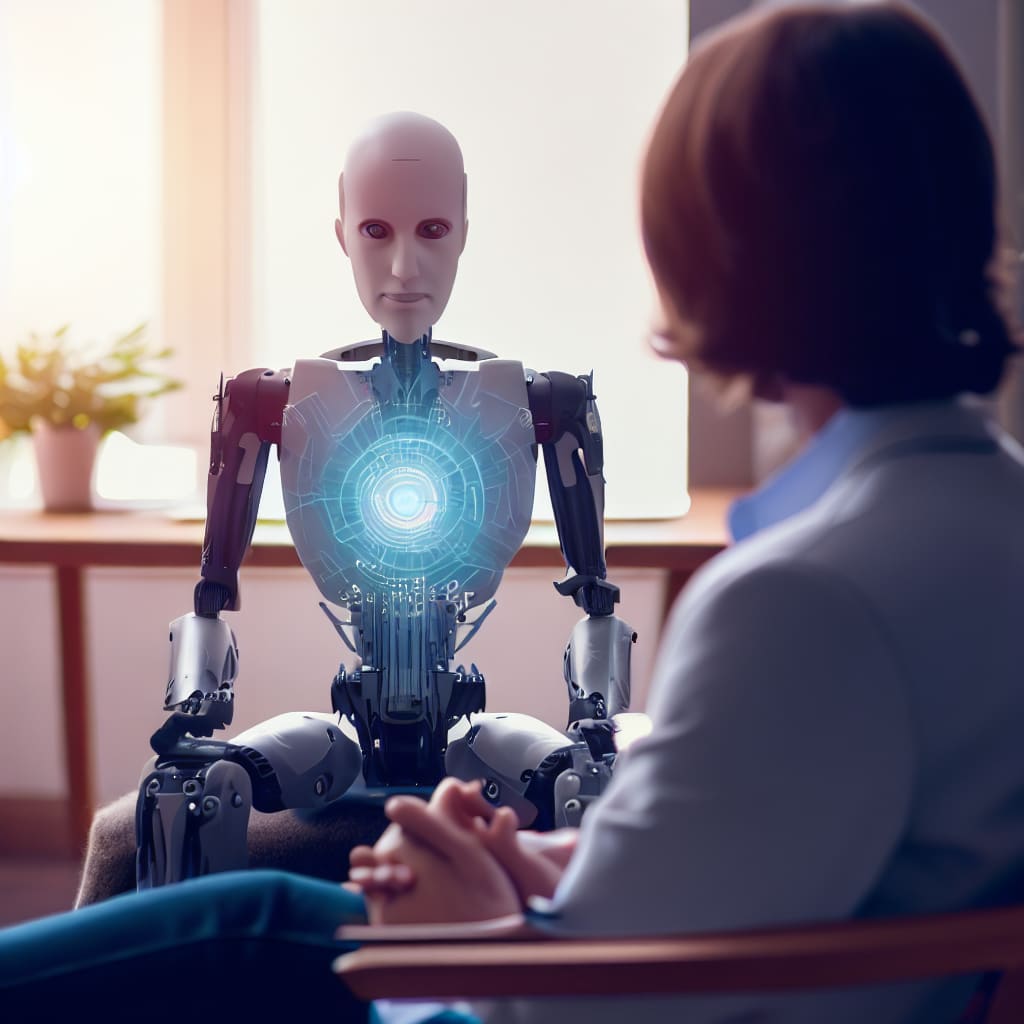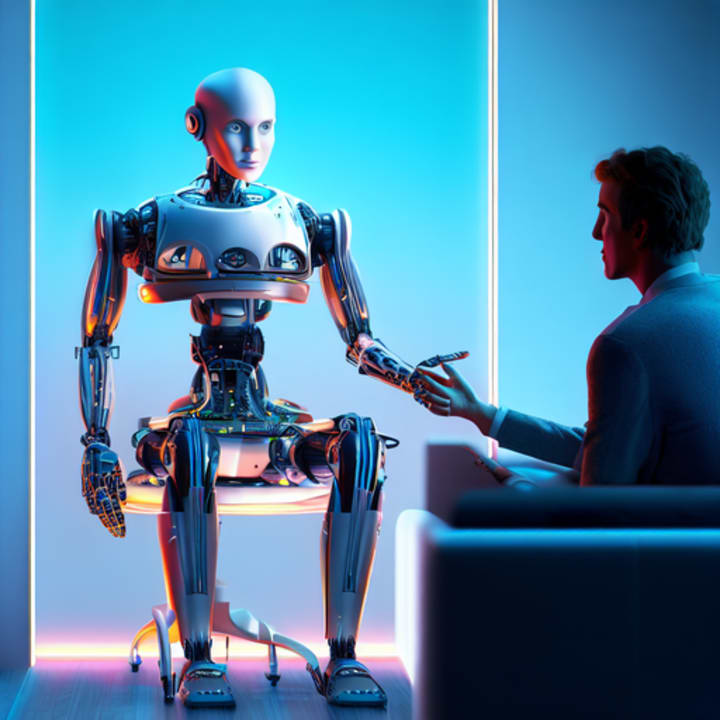Human Therapy vs AI Therapy: Pros and Cons
Human or AI: How to Find the Best Therapist for Your Mental Health

Therapy is the process of seeking professional assistance to deal with mental health issues such as depression, anxiety, trauma, stress, and others. Human therapists or artificial intelligence (AI) systems can provide therapy. Both methods have their own advantages and disadvantages, depending on the needs and preferences of the client. In this article, we will compare and contrast human therapy and AI therapy, as well as discuss their advantages and disadvantages.
Human Therapy
Human therapy involves interacting with a licensed and trained therapist who can provide personalized and empathetic guidance and support. The vast majority of therapists have advanced training and years of experience assessing and dealing with human emotions. Human therapists can use different approaches and techniques, such as cognitive-behavioral therapy (CBT), psychodynamic therapy, interpersonal therapy, or mindfulness-based therapy, to help clients understand and change their thoughts, feelings, and behaviors. Let us not forget that a person's spirituality and energetic presence have an impact on therapy as well.
Some of the benefits of human therapy include:
● Human therapists can build rapport and trust with clients, which can facilitate the therapeutic process and outcome.
● Human therapists can adapt to the client's needs and goals, and tailor the therapy accordingly.
● Human therapists can provide feedback and validation, which can help clients feel heard and understood.
● Human therapists can handle complex and sensitive issues, such as trauma, abuse, or suicidal ideation, which may require more care and expertise.
Human therapists can offer spirituality and energetic presence, which can enhance the healing and transformation of clients. Some clients may value the spiritual dimension of therapy and the connection with a human soul.

Some of the disadvantages of human therapy are:
● Human therapy can be expensive and inaccessible for some people, especially in remote areas or low-resource settings.
● Human therapy can be affected by human biases and errors, such as misdiagnosis, miscommunication, or ethical violations.
● Human therapy can be hampered by the therapist's availability and compatibility, which can result in delays or dissatisfaction for some clients.
● Human therapy can be intimidating or uncomfortable for some clients, who may feel judged or exposed by sharing their personal issues with a stranger.
AI Therapy
AI therapy involves interacting with a computerized system that can simulate human-like conversations and provide automated interventions. AI systems can use natural language processing (NLP) and machine learning (ML) to analyze the client's input and generate appropriate responses. AI systems can also use sensors and data to monitor the client's mood, behavior, and progress.
Some of the advantages of AI therapy are:
● AI therapy can be affordable and accessible for anyone with an internet connection and a device, regardless of their location or situation.
● Because AI therapy is not affected by human factors such as fatigue, mood, or bias, it can be consistent and reliable.
● AI therapy can be convenient and flexible, as it is available 24/7 and can be used at the client's own pace and preference.
● AI therapy can be appealing and engaging for some clients, who may prefer the anonymity and privacy of interacting with a machine.
Some of the drawbacks of AI therapy include:
● AI therapy can lack rapport and empathy, which may make it harder for some clients to connect and open up. Spirituality and energetic transfer elements may be lacking in AI therapy.
● The technology and data used in AI therapy may not capture the nuances and complexities of human emotions and experiences.
● AI therapy may lack feedback and validation, making it difficult for some clients to assess their progress and improvement.
● It can pose ethical and security risks, such as data breaches, manipulation, or misuse.
Final Thoughts
Human therapy and AI therapy are two distinct approaches to providing mental health care. Both have their own strengths and weaknesses, depending on the client's needs and preferences. There is no one-size-fits-all solution for therapy, as each client is unique and deserves individualized attention. Therefore, it is important to weigh the pros and cons of each method before choosing one.
Alternatively, one may opt for a hybrid approach that combines both human and AI elements to maximize the benefits of both methods. Ultimately, the goal of any therapy is to help clients improve their well-being and quality of life. Use what works for you in your specific situation.
About the Creator
Joel Brown
I make an effort to provide helpful advice and energizing techniques to support your success in every area of life. I hope you enjoy my articles. Thank you for visiting this space. I appreciate it.






Comments
There are no comments for this story
Be the first to respond and start the conversation.